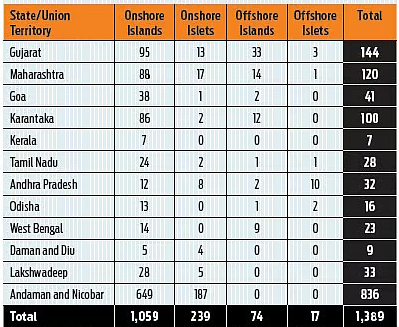Mains Syllabus: GS I - Geographical features and their location-changes in critical geographical features.
India’s coastline has been recalculated as 11,098.81 km from 7,561.60 km, up by 3,537.21 km or nearly 50 %.
Coastlines are not true fractals in the pure mathematical sense but display fractal-like properties.
The larger the scale of the map, the greater the length’s outcome, because larger-scale data capture more intricate details like bays, inlets, and minor irregularities that are smoothed out at smaller-scale data.

|
Length of Coastline of India |
|
|
State/UT |
Coastline Length (km) |
|
Andaman & Nicobar Islands |
3,083.50 |
|
Gujarat |
2,340.62 |
|
Tamil Nadu |
1,068.69 |
|
Andhra Pradesh |
1,053.07 |
|
Maharashtra |
877.97 |
|
West Bengal |
721.02 |
|
Kerala |
600.15 |
|
Odisha |
574.71 |
|
Karnataka |
343.30 |
|
Goa |
193.97 |
|
Lakshadweep Islands |
144.80 |
|
Daman & Diu |
54.38 |
|
Pondicherry (Puducherry) |
42.65 |
|
Total |
11,098.81 |
The revised coastline will be reviewed every 10 years using updated datasets.